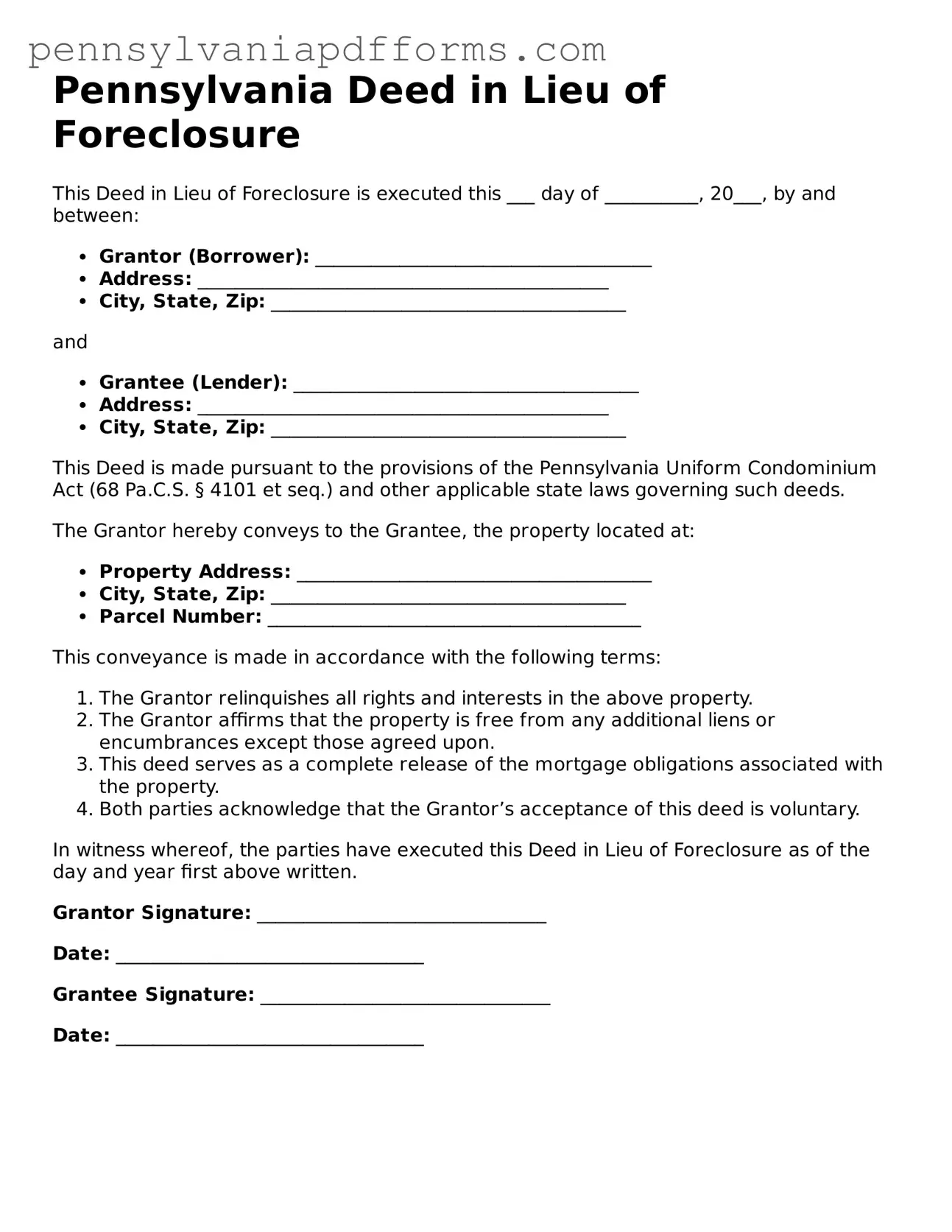Pennsylvania Deed in Lieu of Foreclosure
This Deed in Lieu of Foreclosure is executed this ___ day of __________, 20___, by and between:
- Grantor (Borrower): ____________________________________
- Address: ____________________________________________
- City, State, Zip: ______________________________________
and
- Grantee (Lender): _____________________________________
- Address: ____________________________________________
- City, State, Zip: ______________________________________
This Deed is made pursuant to the provisions of the Pennsylvania Uniform Condominium Act (68 Pa.C.S. § 4101 et seq.) and other applicable state laws governing such deeds.
The Grantor hereby conveys to the Grantee, the property located at:
- Property Address: ______________________________________
- City, State, Zip: ______________________________________
- Parcel Number: ________________________________________
This conveyance is made in accordance with the following terms:
- The Grantor relinquishes all rights and interests in the above property.
- The Grantor affirms that the property is free from any additional liens or encumbrances except those agreed upon.
- This deed serves as a complete release of the mortgage obligations associated with the property.
- Both parties acknowledge that the Grantor’s acceptance of this deed is voluntary.
In witness whereof, the parties have executed this Deed in Lieu of Foreclosure as of the day and year first above written.
Grantor Signature: _______________________________
Date: _________________________________
Grantee Signature: _______________________________
Date: _________________________________
